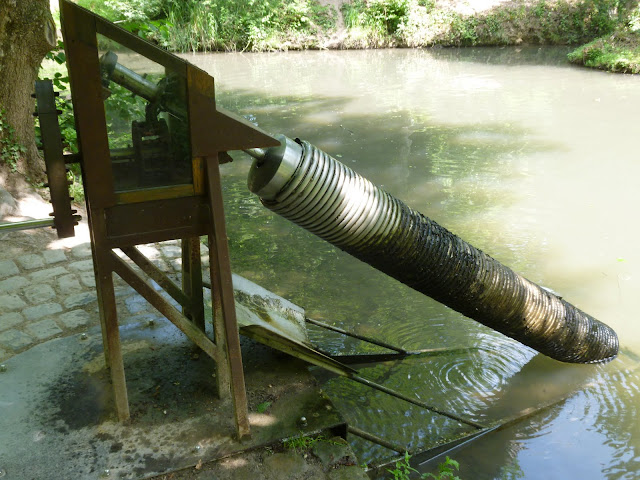Hi All A few years ago, while visiting the park of the castle of Le Clos Lucé, France, where Leonardo da Vinci, invited by King Francis I in 1516, finished the last 4 years of his life, I had discovered the model of an invention (see photo) that is not Leonardo's but that he had taken from Archimedes, and which is Archimedes' screw.  By turning, with a crank, a tube wound helically along an inclined cylinder whose end is immersed in water, the water can be easily raised. I wonder how to adapt the idea to the electromagnetic domain. This would make it possible to obtain a direct current from a rotating movement, thus from an alternating current, or a constant field from a variable field. The idea does not seem to have been studied. The closest I have found is this patent, but it is a motor and I'm interested in solid state. I started testing with a ferrite rod along which four copper strips were plated ( see attached file). Associated two by two, they form cross capacitors. By powering them with two generators out of phase by 90°, we obtain a rotating electric field, and I hoped that the rotating polarization current in the ferrite, which is a very good dielectric, would create a detectable magnetic field with a compass (the coil we see in the picture was only there to detect a variable field). My first attempts were negative, I don't know if it's a question of bad principle or of too weak effect. Any explanation or other ideas?
---------------------------
"Open your mind, but not like a trash bin"
|


 Author
Topic: Electromagnetic Archimed's screw (Read 9959 times)
Author
Topic: Electromagnetic Archimed's screw (Read 9959 times)